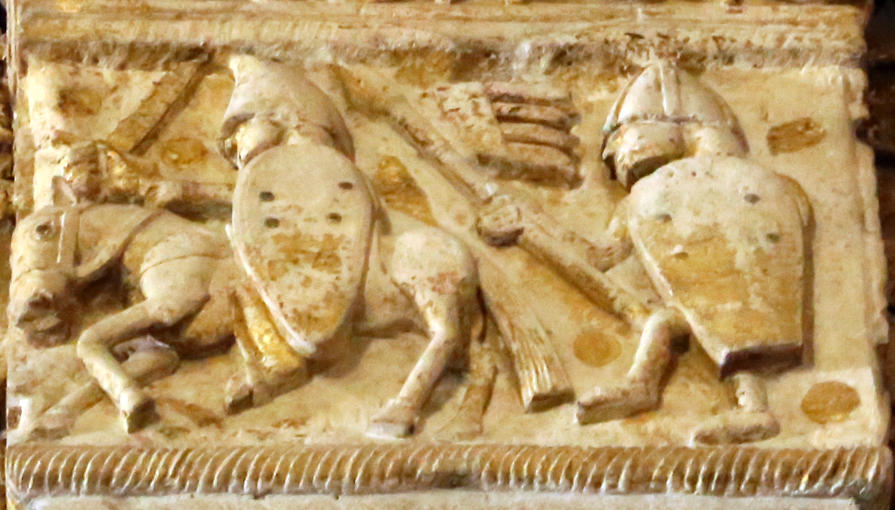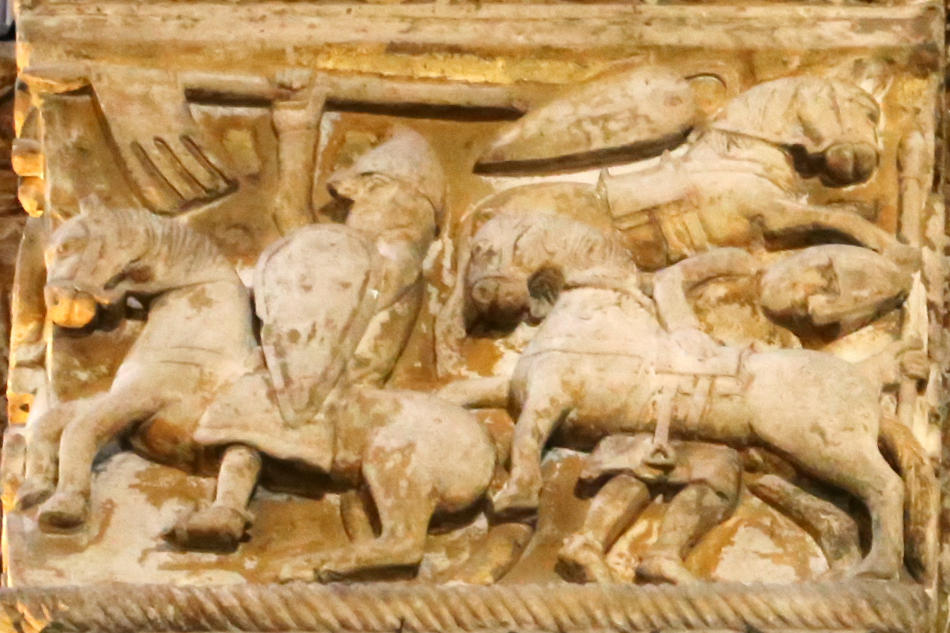
Try Amazon Fresh
Carved capitals, Parma Cathedral, Emilia-Romagna, Italy





Referenced in Italian Medieval Armies 1000-1300 by David Nicolle
The oldest relief carvings in Parma Cathedral date from 1150-70, and are amongst the most important sources of information about 12th century military equipment. They also illustrate saddles without riders (left); and an infantryman with a flat-based mantlet shield and a segmented or fluted helmet (right). (in situ Cathedral, Parma)
Photos by Sailko. Capitals by Nicholaus and workshop c.1106-1120.
Referenced on p.220, Arms and Armour of the Crusading Era, 1050-1350, Western Europe and the Crusader States by David Nicolle
581A-L Carved capitals, Lombardy, 1150-70
(in situ Cathedral, Parma, Italy)
The carvings in Parma Cathedral are among the finest examples of Romanesque sculpture in Italy. They also illustrate important details of arms and armour. Here two bows are shown (B and L), both probably of the recurved composite type. Spears lack flanges or wings, whether in the hands of a huntsman representing the month of May (E), of foot-soldiers (C and I) or of horsemen (F, J and K). Swords are similarly straightforward, being of two distinct forms with tapering (A, G and J) or non-tapering (D) blades, straight quillons, and round (A, D, G and J) or nut-shaped (E) pommels. The helmeted horsemen presumably wear long-sleeved hauberks with coifs (D, F, G, J and K). Two forms of helmet are shown. Most are conical types, some with forward-angled crowns, plus nasals of various sizes (D, F, G, J and K), but a quite different helmet is worn by an infantryman. This is tall, round, either fluted or segmented and lacks a nasal (I). It even seems to have a slightly angled or curved lower rim like an exceptionally early bascinet. It is worth noting that this foot-soldier also carries a distinctive form of tall, flat-based mantlet of a type known in the Middle East as a januwîyah ('Genoese') shield. Such shields are quite common in Italy but are otherwise virtually unknown outside the Middle East. All other shields are normal kite-shaped cavalry types with or without rivets. One is seen from the inside (J), showing a system of three straps, one for the fist, one across the elbow and one linking the former two.
See also The sleeping soldiers at the Resurrection, Pulpit of William, Cagliari Cathedral, Italy, 1159-1162
Other 12th Century Illustrations of Costume & Soldiers
Italian Illustrations of Costume & Soldiers